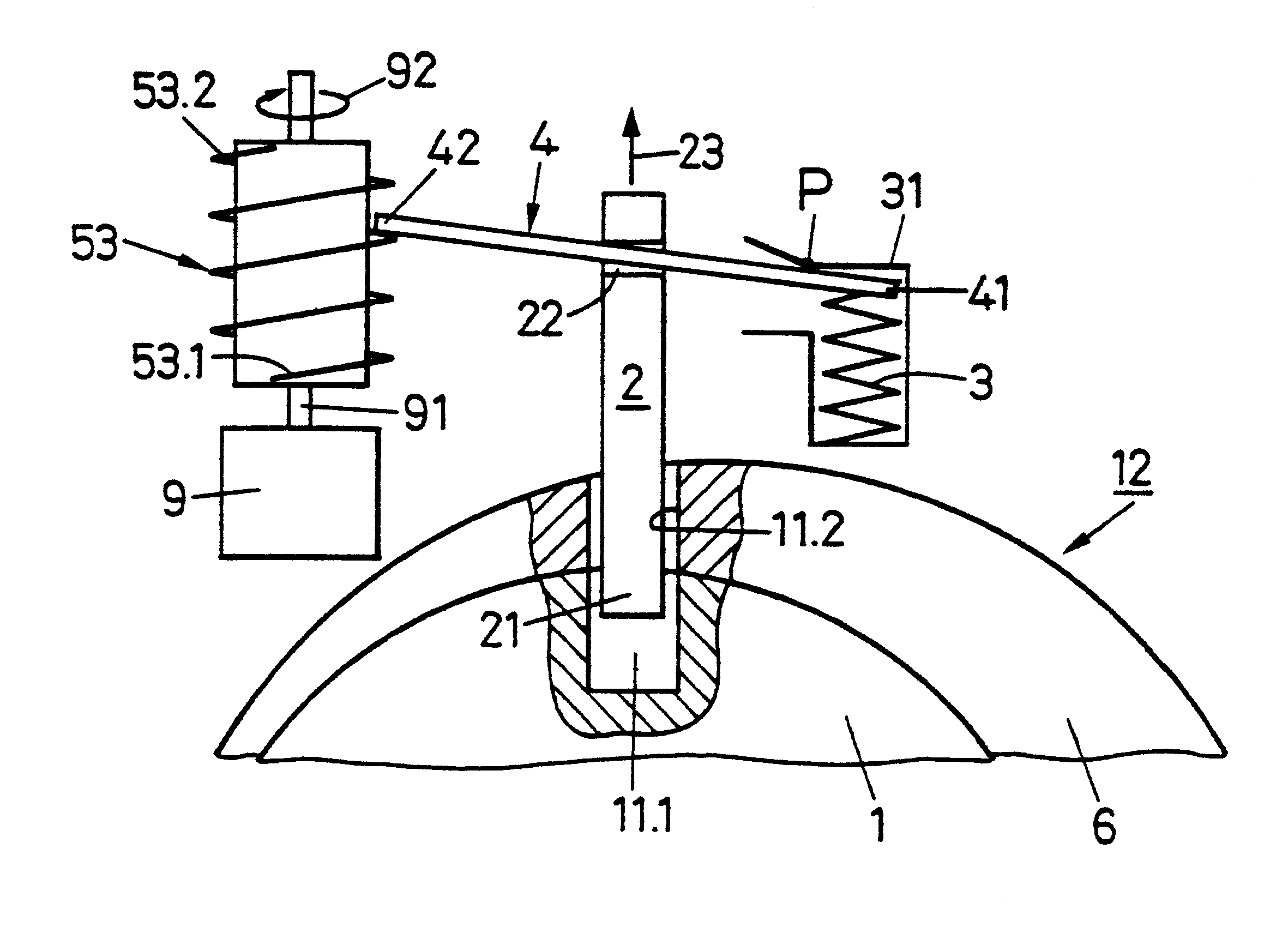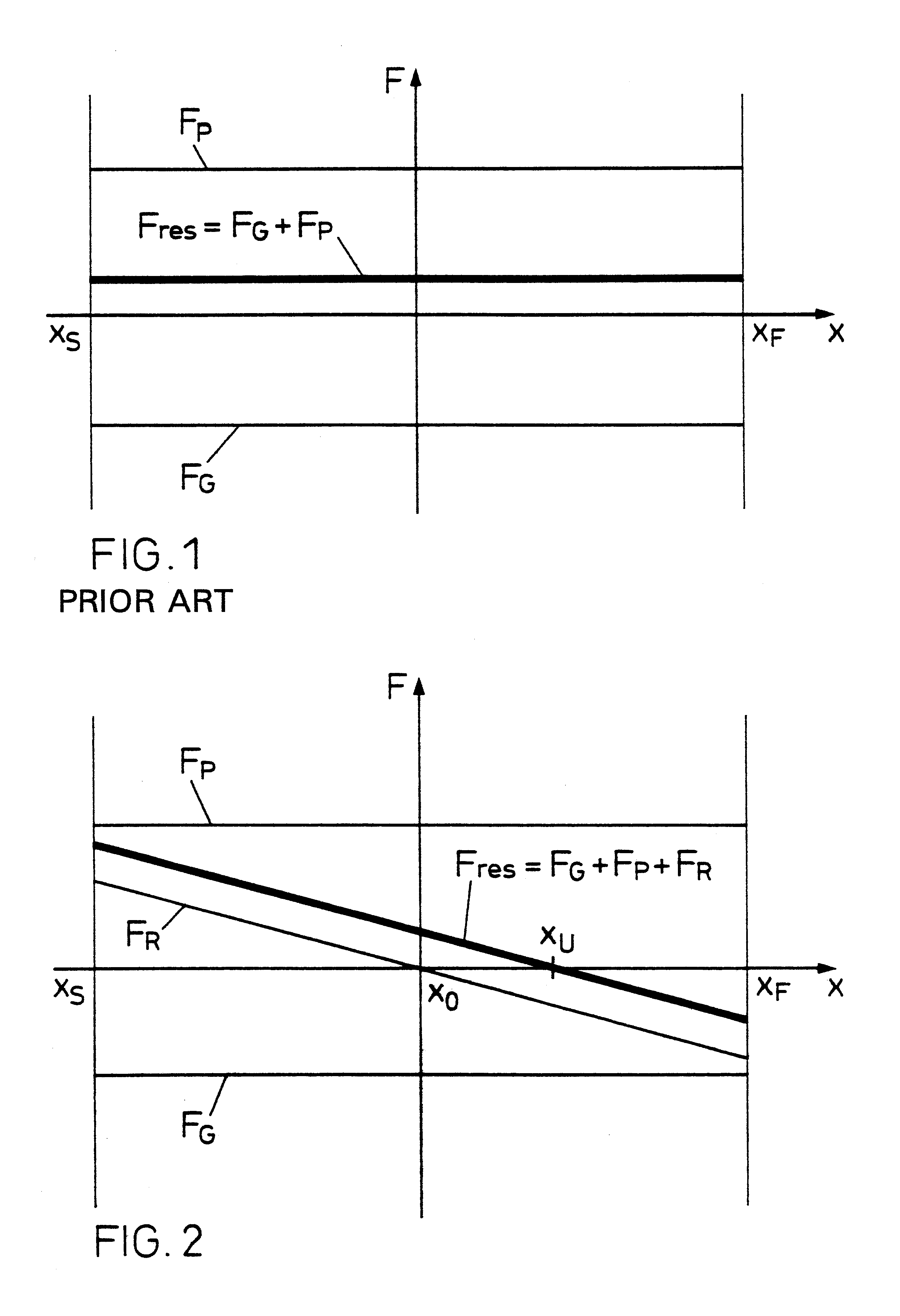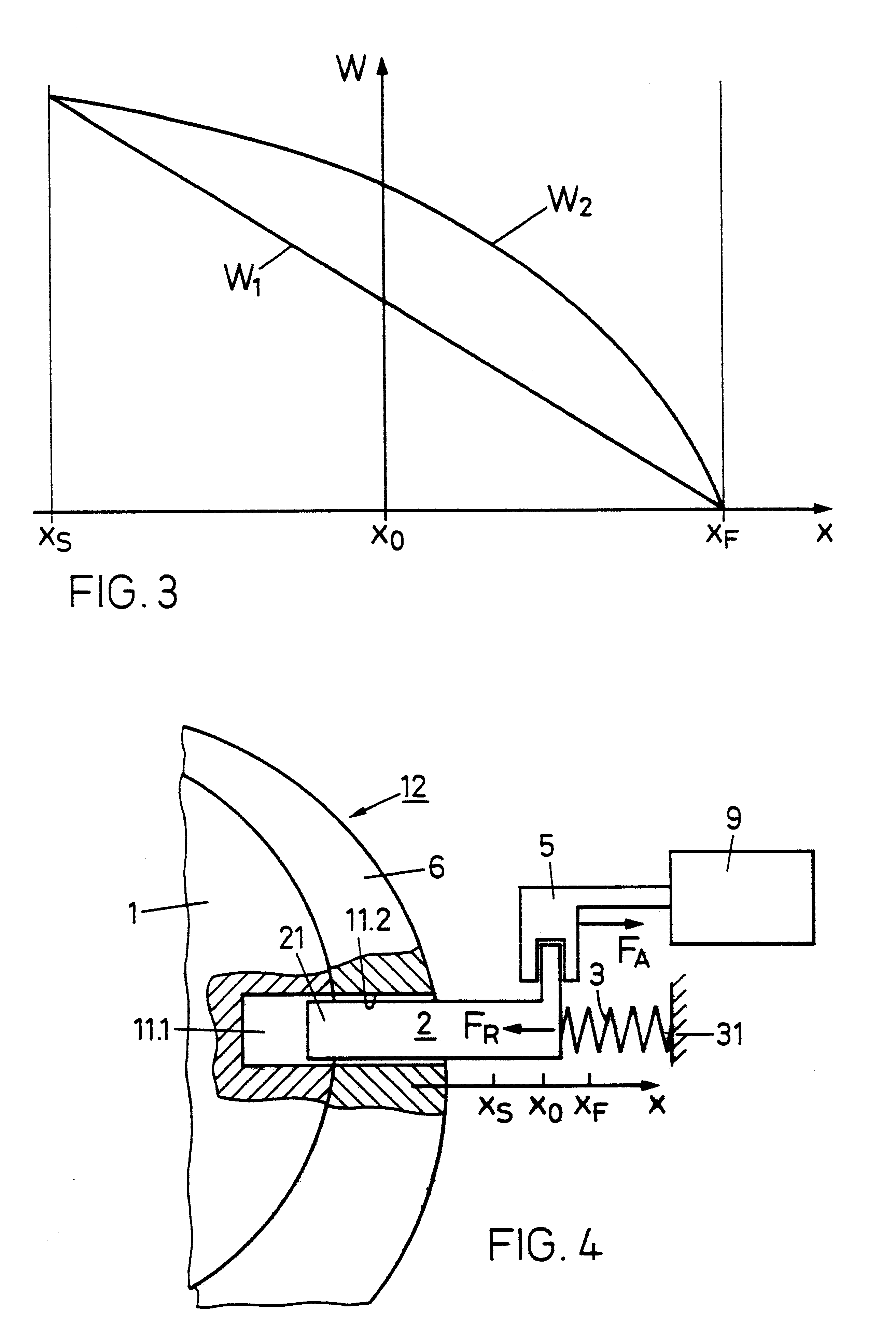Locking device
a technology of locking device and locking element, which is applied in the direction of cylinder locks, non-mechanical controls, lock applications, etc., can solve the problems of inability to operate reliably, the locking device could be undetectable by external influences, and the risk of restoring force on the inhibiting element is inherent. , to achieve the effect of reliable operation
- Summary
- Abstract
- Description
- Claims
- Application Information
AI Technical Summary
Benefits of technology
Problems solved by technology
Method used
Image
Examples
Embodiment Construction
In each of FIGS. 1 and 2 are plotted forces F(x) on an inhibiting or blocking element as a function of a space coordinate x along which the inhibiting element can move and in which:
x.sub.S is an inhibit position, i.e., the position to be occupied by the inhibiting element when it blocks or inhibits movement of the lock cylinder, i.e., the rotor and stator are mutually locked;
x.sub.F is a release or free position, i.e., the position to be occupied by the inhibiting element in which it releases or frees the lock cylinder for movement to the stator;
x.sub.O is a rest position, i.e., the inhibiting element position in which, in the locking device according to the invention, no restoring force acts on the inhibiting element.
The inhibiting element must only release the lock cylinder in the free position x=x.sub.F, whereas it must inhibit the same in positions x0act in the positive x-direction and negative forces F<0, in the negative x-direction.
FIG. 1 is a force / distance diagram for a prio...
PUM
 Login to View More
Login to View More Abstract
Description
Claims
Application Information
 Login to View More
Login to View More - R&D
- Intellectual Property
- Life Sciences
- Materials
- Tech Scout
- Unparalleled Data Quality
- Higher Quality Content
- 60% Fewer Hallucinations
Browse by: Latest US Patents, China's latest patents, Technical Efficacy Thesaurus, Application Domain, Technology Topic, Popular Technical Reports.
© 2025 PatSnap. All rights reserved.Legal|Privacy policy|Modern Slavery Act Transparency Statement|Sitemap|About US| Contact US: help@patsnap.com



